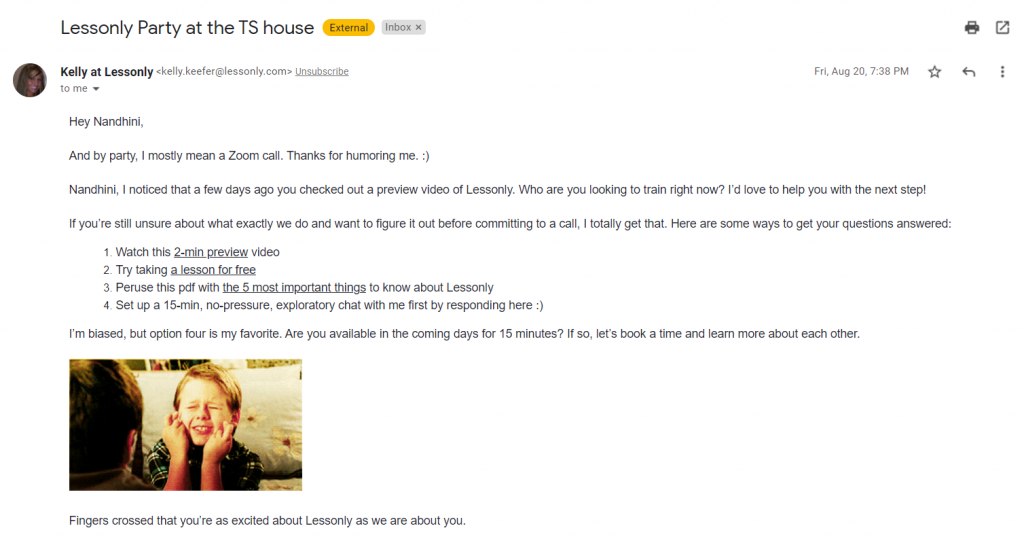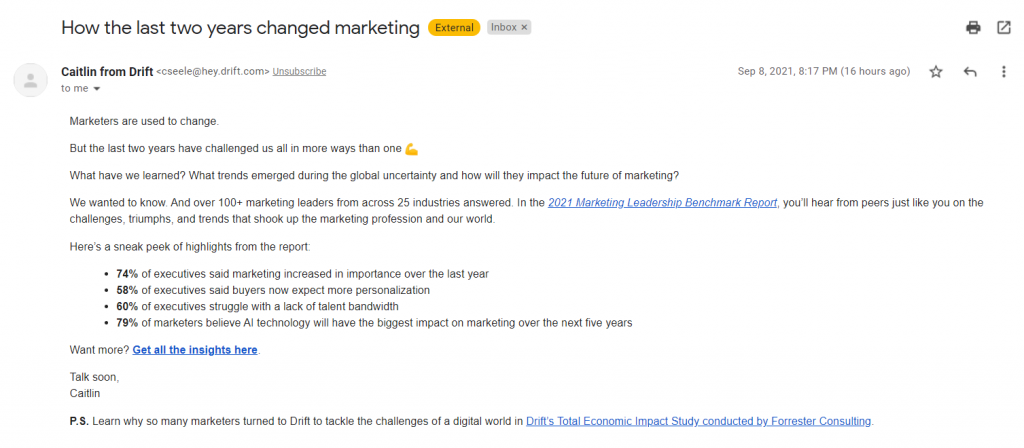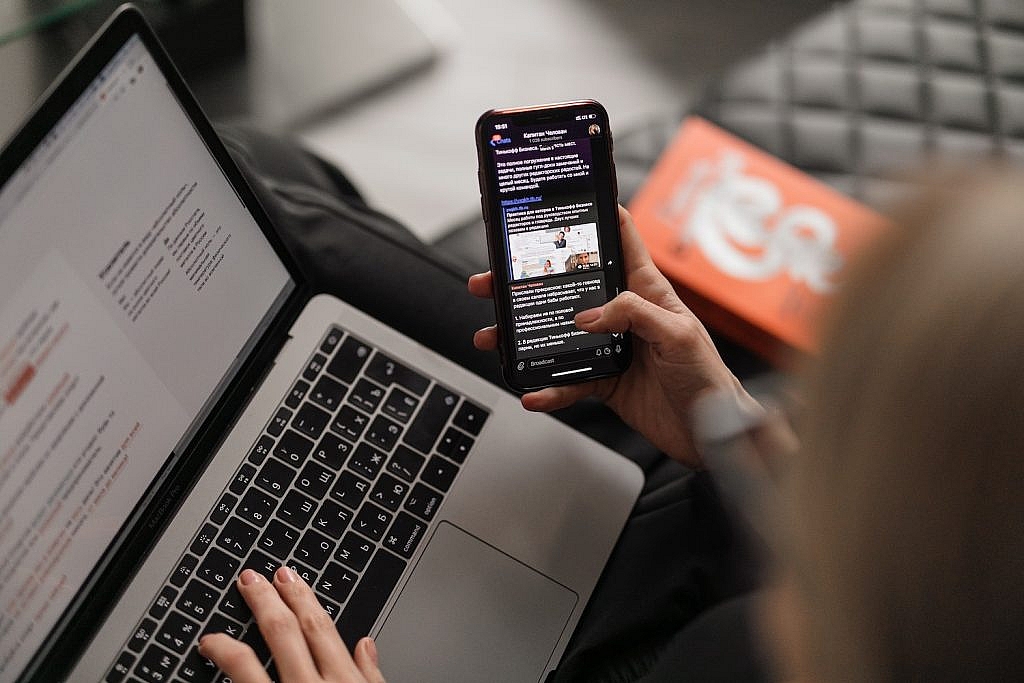Email Newsletter Guide: How To Write Newsletters That Actually Get Read
Why do you pick a book at a store or go for a movie?
It’s probably because you heard great reviews about it or you “opted in” because something about it caught your attention.
You’d go back looking for new releases of the book and the movie only if the author and the director are consistent in their efforts to give you the best work.
Won’t you?
So, how different is a newsletter from this?
Honestly, not much!
A newsletter like a book or a movie is when an audience genuinely opt-in to hear from you because they find you promising, useful, and unique.

If your newsletter, like an interesting book or a movie, does not make the reader want to grab popcorn and fully indulge in the content, don’t bother writing at all!
Newsletters are not another task to be checked off on your to-do list.
You’ve got to have a lot of passion to be able to spin a story, sketch a screenplay, and make your newsletters a blockbuster hit!
Why Should Your Newsletters Be Read?
Before we delve into how to write a newsletter that gets read, let’s first find answers to why it should get read in the first place.
- Increase brand awareness
- Nudge users to move further down the funnel
- Engage your audience with useful content
- Share product and feature updates
- Become a thought leader
5 Steal-Worthy Strategies To Make Your Newsletters Irresistible To Read
1. Stick to the magical three-step formula
A magical three-step formula to an engaging newsletter is an attractive subject line, compelling email copy, and also measuring the success of your content to understand what works and what doesn’t.
- Attractive subject line copy + Key elements = Higher open rates
The starting point to an email content that wants to be read is an attractive subject line. Here are some pointers on making your subject lines attractive:
- Personalize your subject lines with the recipient name, company name, or any other relevant attribute
- Add emojis to make it instantly relatable
- Breakthrough the inbox clutter by creating urgency (use words like “hurry”, “expires”, “limited”, “soon”, and more)
- Intrigue the recipient with a question
- Phase-out bland subject lines and incorporate the art of storytelling. Try analogies, metaphors, and more
Bonus Tip: Be Data-driven
Tap into customer interests. Base your subject lines on your subscribers’ last activity on your store, last purchase, tastes and preferences, and more.
Ex: If you have a food delivery app and see that a customer orders pizzas way too often in the nighttime, your subject lines should be something like this:
, It’s almost dinner time, let’s order your favorite pizza
Based on what we just discussed, you’d know the key elements now! To summarize,
- Emojis
- Personalization tag
- Data-driven
- Punctuations
- Good design + Mobile responsiveness = Better engagement
Attractive subject lines are just the tip of an iceberg, more like luring in your audiences for the real feast – your email copy (will be discussed later) and design.
So, what is a good design?
- A clean layout without any intrusive elements
- Rich in graphics – charts, images, gifs, videos, or any other entertaining media asset
- A layout that is mobile responsive
- Monitor your metrics
I cannot stress this enough! Whether your newsletter gets read or not largely depends on understanding your audience.
- Dig into the data and understand your metrics. What type of content has the most and least engagement
- What does the majority of your audience like
- What content resonates with your audience segments
- How can you tweak your content to get the maximum engagement
Needless to say,
Higher open rates
+ Better engagement
+ Monitoring the metric
= Email Newsletter Success
2. Write like you talk: Treat your subscribers like your pals
Your newsletters may reach hundreds of thousands of subscribers. But, if you want the email to be read, you should make the email sound like a personal one-to-one conversation rather than a lousy blast.
Phase-out generic content and add some pop, fizz, and pizzaz!
Here’s a good example from Lessonly. After I subscribed to Lessonly, I started receiving a series of emails from them based on my interaction. This is a great example of how to keep the tone friendly, conversational, light, and lifelike 🙂

Pro tips to make your emails look personal [Like a 2 am phone call to your BFFs] ?
- Make sure that it’s from an individual and not under a brand’s name
- Use a simple conversational tone
- Avoid using jargon unless your audience can digest it
- Switch between plain text emails and design-heavy emails
- Break down your content into bullets and make it instantly skimmable
- Be conversational with your sign-off (Try “Talk soon”, “Cheers”, “Good day” etc. instead of the usual “Regards”)
Note? Don’t go overboard with this strategy as there’s a fine line between being friendly and creepy!
3. Be useful and have solid takeaways
Newsletters are not a channel to load promotional emails.
If that’s the objective, I’m sorry to break the bubble – it ain’t gonna happen!
Emails are a great channel for you to connect with your customers, educate them, entertain them, solve their problems, hear about their appreciation and woes, and also promote.
It’s just a small piece of the pie.
Email Newsletters must be leveraged to optimize customer experience, heavily.
Think about it.
Your typical subscriber has an inbox flooded with emails. Ask yourself why should they take the time to open your email, read it, and take action?

They should do so because your newsletters cover the following:
- Tips and tricks pertaining to the industry are shared in the body of the email itself and not a random link to a blog
- Diverse content resources for free – ebooks, whitepapers, blogs, webinars, infographics, videos, and more that cover different stages of a buyer’s journey
- An opportunity to hit reply and have all their doubts and queries answered
4. Tap on emotions and trigger response
There’s no marketing without emotions. Think about how Apple manages to get hundreds and thousands of customers excited about their launches.
Through teasers and keynotes, they trigger the emotion of excitement and curiosity and reap the benefits of massive sales on their launch day.
Similarly, your newsletters must also appeal to reader’s emotions for them to connect with you.
Let’s look at some trigger words to instill emotions in your newsletters.

How to map the emotions with your objectives?
- Instill the emotion of curiosity for your launches
- Instill the emotion of happiness for the brand’s as well as user’s milestones
- Instill the emotion of urgency for your offers, sale, and discounts
- Instill the emotion of information to get your content across to your audience
- Instill the emotion of action for your marketing goals
5. Segment your audience
The foundation to getting your newsletters to read is segmenting your audience. This is a crucial step because people read only when they are relevant.
Imagine opening your newsletter by checking upon your subscriber who lives in Newyork regarding a recent storm that happened in California.
You’ll look like a bot that the user wants to unsubscribe from with no second thoughts.
Don’t be vague and generic with your segmentation as rightly pointed out by Marketoonist.

On what basis should you segment your subscribers?
- Geography
- Demography
- Interaction with your website
- Stage in the marketing funnel
- Tastes and preferences
- Past purchases
Depending on the nature of your business, the segmentation goals may widely vary!
Wrapping Up
When you put in a lot of effort and have the drive to make your newsletters the talk of the town, I’m sure you can see a lot of ROI from it,
But, more often than not, the interest tends to slowly fade away and the quality of the newsletter starts to dwindle.
You have to constantly make efforts to ensure that your newsletter gets read and engaged with.
Spend time on writing a kickass copy and as far as the design, mobile responsiveness, and layout are concerned you may want to consider some good tools.
There are tools for email newsletters like BayEngage, Hubspot, and Mailchimp. You may want to consider some alternatives too!
I hope these tips come in handy!
If you have any other tips, do share them in the comments and I’d be happy to chat!
